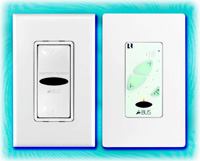Standardizing Multi-room Audio
When the Consumer Electronics Association (CEA) published the ANSI/CEA-2030 Multi-room Audio Cabling Standard last year, it brought welcome conformity to an industry that had been patched together by disparate wiring solutions.
The new standard, meant to complement TIA-570-B, the Residential Telecommunications Infrastructure Standard, “provides a standard method for installing cable for use in residences being pre-wired for multi-room audio,” according to Megan Hayes, manager of standards development at the CEA. “If a builder uses ANSI/CEA-2030, the cables and connectors will be in the appropriate places for hooking up a multi-room audio system, no matter which system a homeowner decides to use.”
For manufacturers and installers, “CEA-2030 provides a clear path for determining what an appropriate distributed media backbone is,” says Jeff Kussard of Russound. “If audio/video or low-voltage contractors comply with the standard, the wires and connectors will not only support current multimedia needs but future ones as well.”
That’s good news for builders and homeowners who can be assured that a home’s wiring won’t be obsolete as new technologies emerge. “The standard bridges the gap between legacy multi-room systems and newer systems like A-BUS that are digital,” Kussard says.
The standard is one move toward achieving what the Custom Electronic Design and Installation Association (CEDIA) and CEA call “fourth trade status.” The trade organizations want consumers, builders, and government regulators to consider an electronic systems contractor as essential and integral to new home construction as a plumber, electrician, and HVAC contractor.



